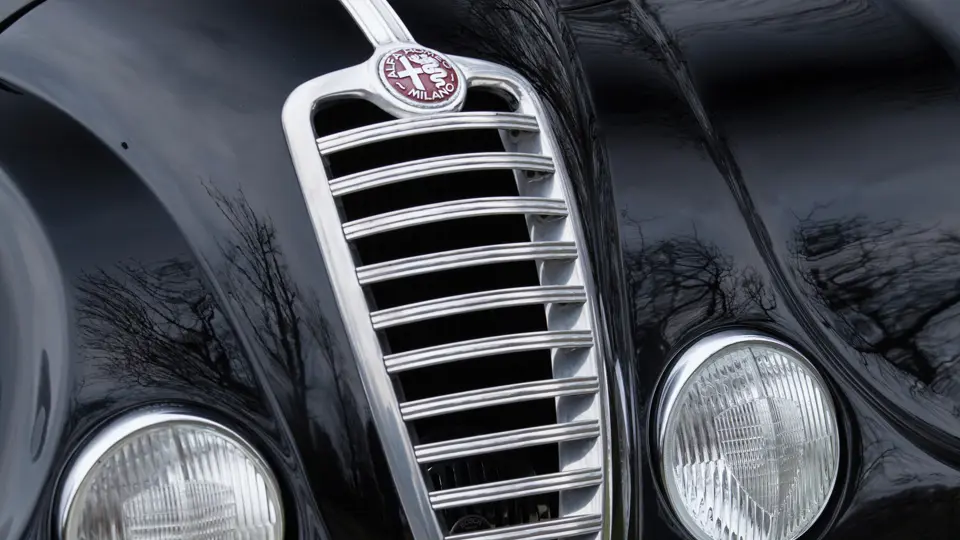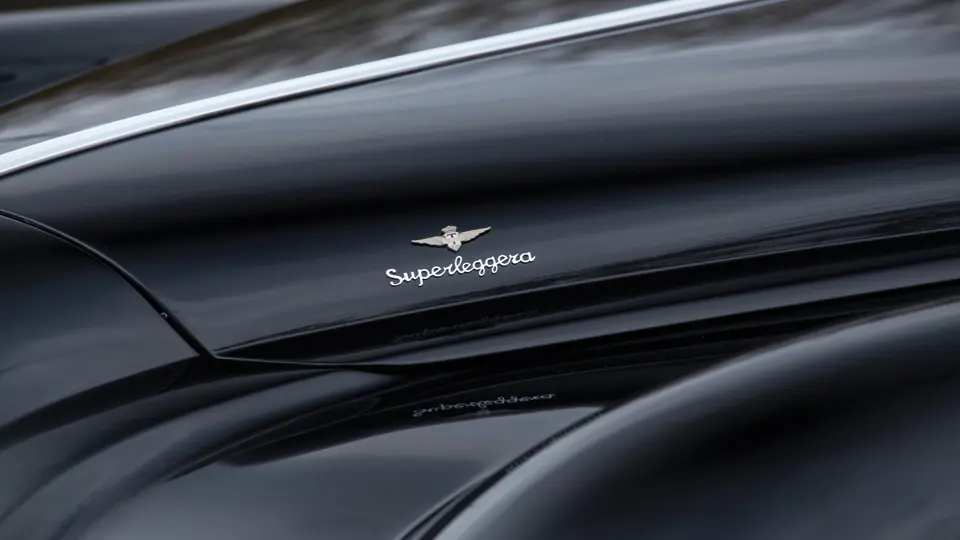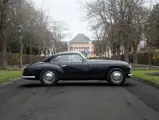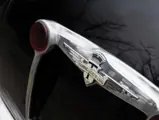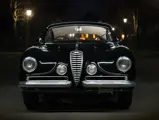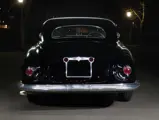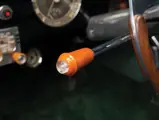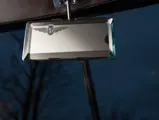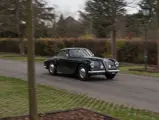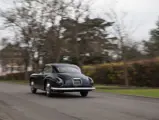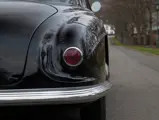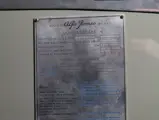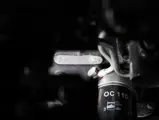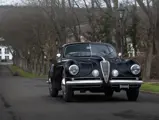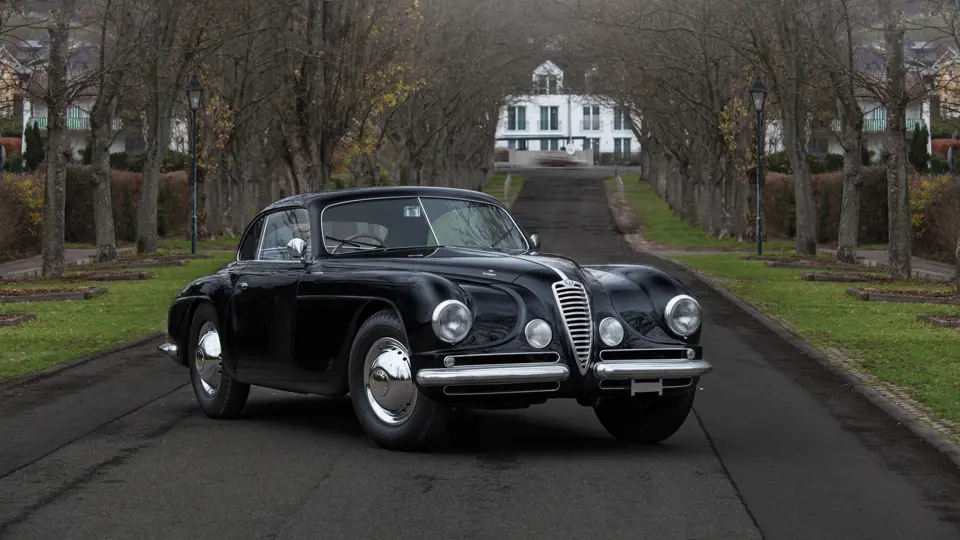
1951 Alfa Romeo 6C 2500 SS Villa d’Este Coupé by Touring
{{lr.item.text}}
€750,000 - €900,000 EUR | Not Sold
{{bidding.lot.reserveStatusFormatted}}
- One of 36 built and the last handmade Alfa Romeo of its era
- Eligible for many of the world’s greatest rallies and concours, including the Mille Miglia Storica
- Recently subject to an extensive restoration
- Une des 36 voitures produites et dernière Alfa Romeo assemblée manuellement à l’époque
- Éligible pour les plus prestigieux concours et rallyes historiques y compris la Mille Miglia Storica
- Restauration récente de grande ampleur
110 bhp, 2,443 cc DOHC inline six-cylinder engine with three Weber carburettors, four-speed manual transmission, coil-spring independent front suspension, independent trailing-arm torsion-bar rear suspension, and four-wheel hydraulic drum brakes. Wheelbase: 2,700 mm
Moteur à six cylindres en ligne et 2 ACT, 2 443 cm3, 110 ch, trois carburateurs Weber, boîte de vitesses manuelle à quatre rapports, suspension avant indépendante par ressorts hélicoïdaux, suspension arrière indépendante par barres de torsion et bras tirés, quatre freins à tambour à commande hydraulique.
When it was introduced in 1939, the 6C 2500 was a landmark car as the first road-going Alfa Romeo capable of reaching 160 km/h. Thanks to four-wheel independent suspension, with parallel trailing arms and coil springs in the front and swing axles with torsion bars at the rear, the Italian manufacturer was able to offer advanced handling characteristics to match its considerable performance. Powered by the legendary Vittorio Jano–designed straight-six engine, Alfa Romeo continued its tradition of offering several levels of tuning, starting with the 87-horsepower Turismo, moving up to the 110-horsepower Super Sport, or SS, and culminating in the track-ready Tipo 256 with 120 horsepower.
The outbreak of war in Europe would limit production of the 6C 2500 to only a few hundred examples during the years of conflict, however, at the end of the war, the 6C 2500 offered Alfa Romeo the opportunity to re-launch its manufacturing efforts by returning to its advanced pre-war design. The first project created after war’s end was the 6C 2500 Freccia d’Oro, which had essentially the same running gear as the pre-war 6C 2500s. Three years later, in 1949, Alfa Romeo introduced the Villa d’Este Berlinetta Coupés with Superleggera coachwork by Touring of Milan. Alfa Romeo chose the name Villa d’Este after this design won the Concorso d’Eleganza, which was held at the historic resort on Lake Como in northern Italy.
Between 1949 and 1952, 130 Villa d’Este coupés were produced, with 36 examples bodied by Carrozzeria Touring in Milan. The result was one of the most elegant coachbuilt sports cars of the immediate post-war era. The 6C 2500 represented a turning point for Alfa Romeo and car manufacture as a whole as the last of the coachbuilt Alfa Romeos before mass-produced bodies became the norm. Fascinatingly, as a handmade coachbuilt car, no two examples are precisely the same, with numerous subtle differences evident between examples. The body on chassis number 915910 is an excellent example of the type, incorporating elegantly integrated aluminium front bumpers, a steeply raked windscreen, and perfectly sculpted tail.
This beautiful 2500 SS left the factory in 1951 before being delivered to Carrozzeria Touring. On 27 April, the car was sold new to its first owner in Milan with delivery to a company in the city, Tubettificio Lombardo S.p.A. While little is currently known of its subsequent history, the car resurfaced in the late-1990s in a private collection in Italy. In 2008, the car was acquired by the current consignor and then subject to an extensive, high-quality restoration in Germany and Italy.
Currently finished in deep blue with contrasting interior and chrome domed wheel covers, this beautifully restored Villa d’Este would be equally at home on the concours lawn as in an international rally for which it is eminently eligible.
Empattement : 2 700 mm
Lors de son introduction en 1939, la 6C 2500 fut un modèle marquant en tant que première Alfa Romeo de route capable d’atteindre 160 km/h. Grâce à ses quatre roues indépendantes par bras tirés et ressorts hélicoïdaux à l’avant et demi-essieux oscillants et barres de torsion à l’arrière, le constructeur italien fut en mesure d’offrir un châssis au comportement dynamique moderne et à la hauteur des performances dont il était capable. Propulsée par le légendaire moteur à six cylindres en ligne de Vittorio Jano, la 6C 2500 était proposée selon différents niveaux de préparation en commençant par la Turismo de 87 ch suivie de la Super Sport de 110 ch puis de la Tipo 256 prévue pour la compétition avec 120 ch.
La guerre déclenchée en 1939 limita la production pendant les années du conflit à quelques unités, mais après la fin de la guerre, la 6C 2500 donna à Alfa Romeo l’occasion de reprendre ses activités automobiles par la relance du modèle de 1939. La première version créée après 1945 fut la 6C 2500 Freccia d’Oro dotée pratiquement de la même mécanique que celle de la 6C 2500 d’avant-guerre. Trois ans plus tard, en 1949, Alfa Romeo introduisit les coupés Berlinetta Villa d’Este habillés d’une carrosserie Superleggera par Touring, e Milan. Alfa Romeo choisit le nom de Villa d’Este après la distinction obtenue par ce modèle au Concorso d’Eleganza tenu dans ce lieu historique situé sur le lac de Côme dans l’Italie du nord.
Entre 1949 et 1952, cent trente coupés Villa d’Este furent produits dont 36 carrossés par Carrozzeria Touring qui font partie des plus élégantes voitures de sport produites dans l’immédiat après-guerre. La 6C 2500 représente un tournant pour Alfa Romeo et l’industrie en général en tant que dernier modèle assemblé manuellement, ce qui implique qu’il n’existe pas deux voitures rigoureusement identiques et que de subtiles différences sont visibles d’une voiture à l’autre. La carrosserie du châssis 915910 est un excellent exemple de ces différences avec ses pare-chocs avant en aluminium élégamment intégrés, un pare-brise très relevé et une partie arrière harmonieusement sculptée.
Cette superbe 6C 2500 SS sortie d’usine en 1951 a été livrée à Carrozzeria Touring. Le 27 avril, la voiture a été vendue neuve à son premier propriétaire à Milan et livrée à la société Tubettificio Lombardo S.p.A. Les informations sur son existence ultérieure sont rares et la voiture reparut à la fin des années 1990 dans une collection italienne. En 2008, la voiture achetée par le vendeur actuel bénéficia d’une restauration en profondeur et de haute qualité en Allemagne et en Italie.
Peinte actuellement en bleu foncé avec intérieur contrastant et roues garnies d’enjoliveurs chromés, cette superbe Villa d’Este est prête à affronter les jurys des plus prestigieux concours ou à participer aux plus importants rallyes historiques pour lesquels elle est éminemment eligible.
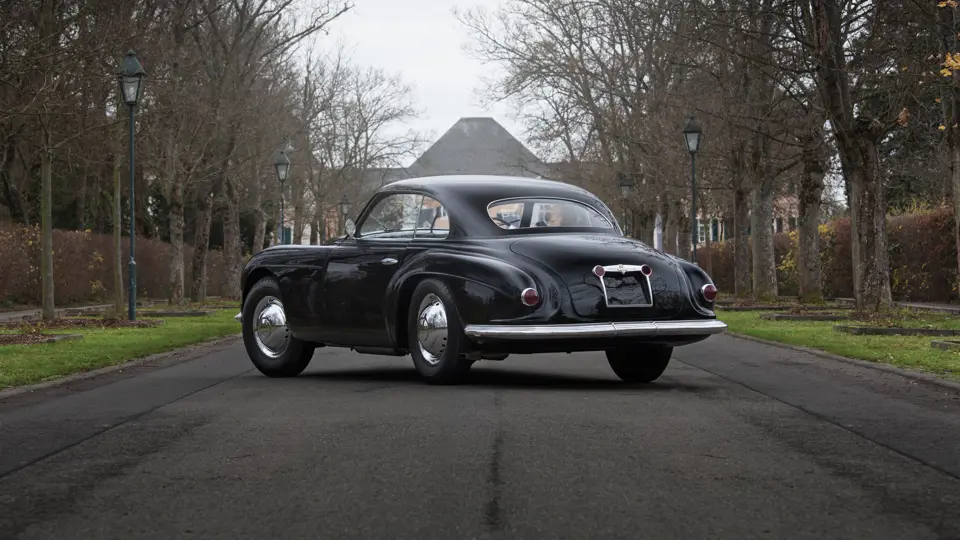
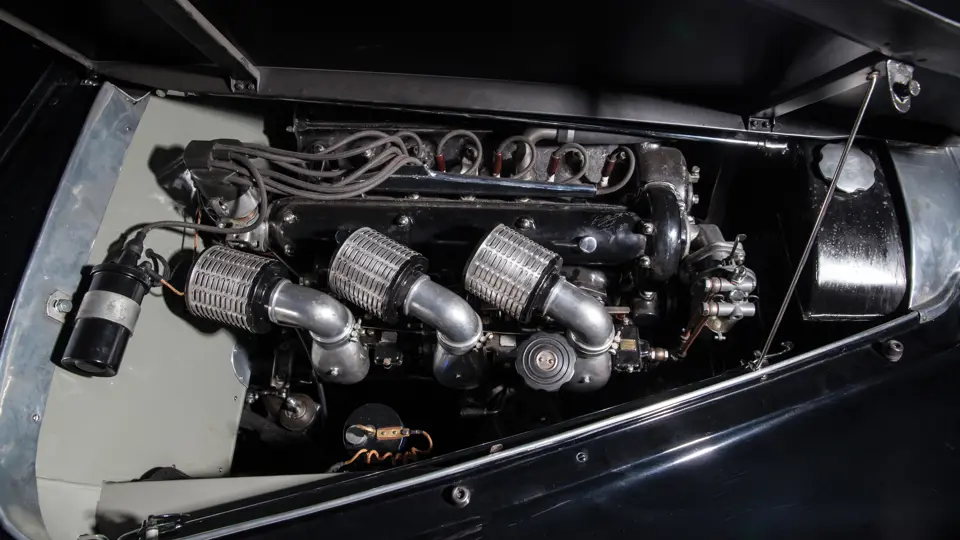


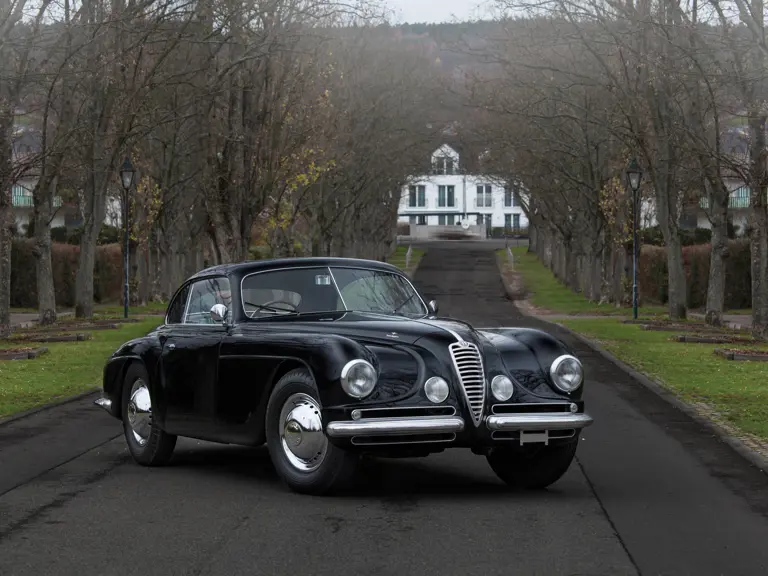
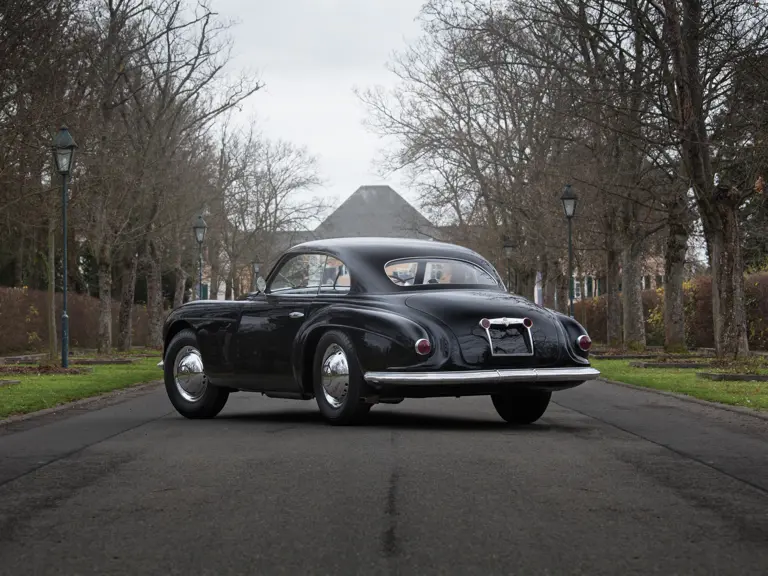
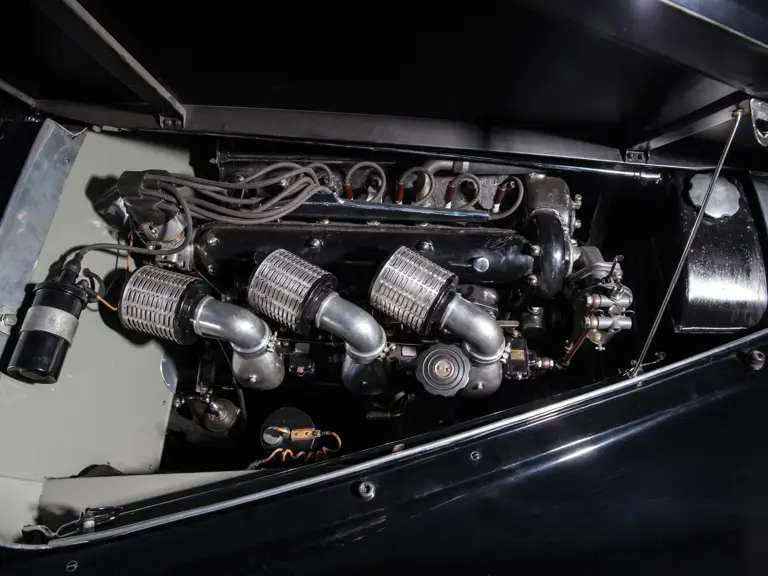

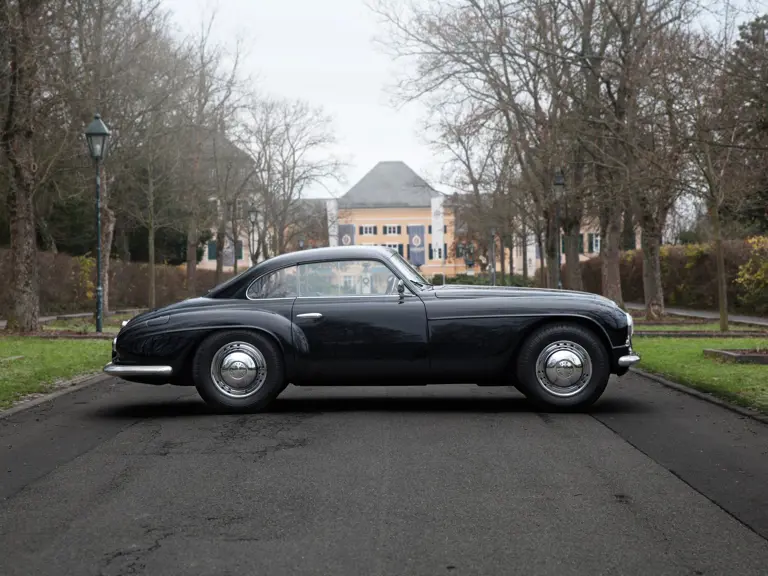
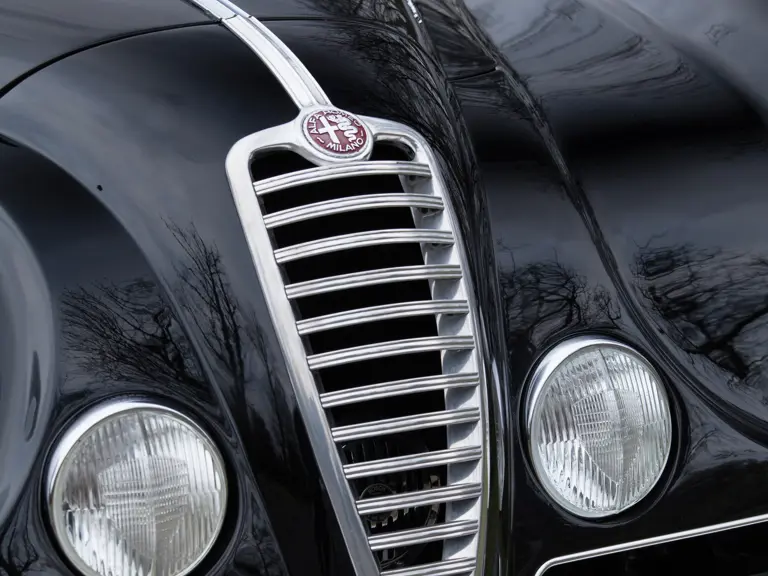
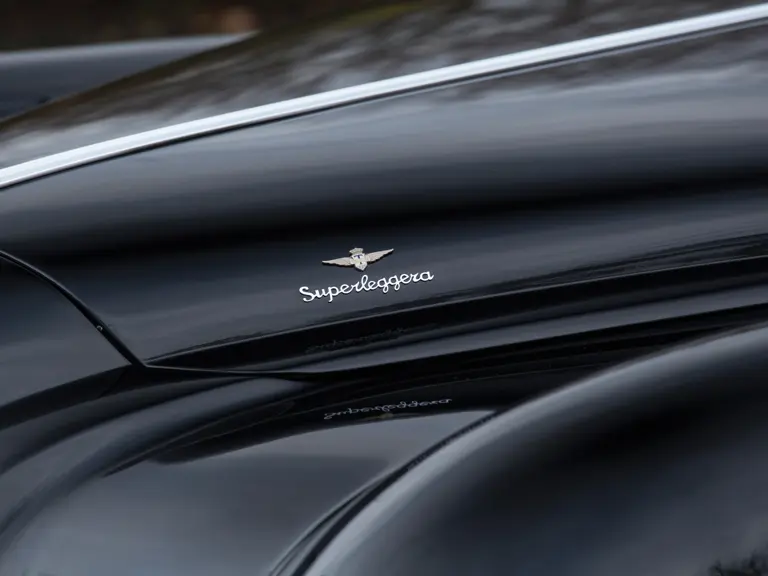
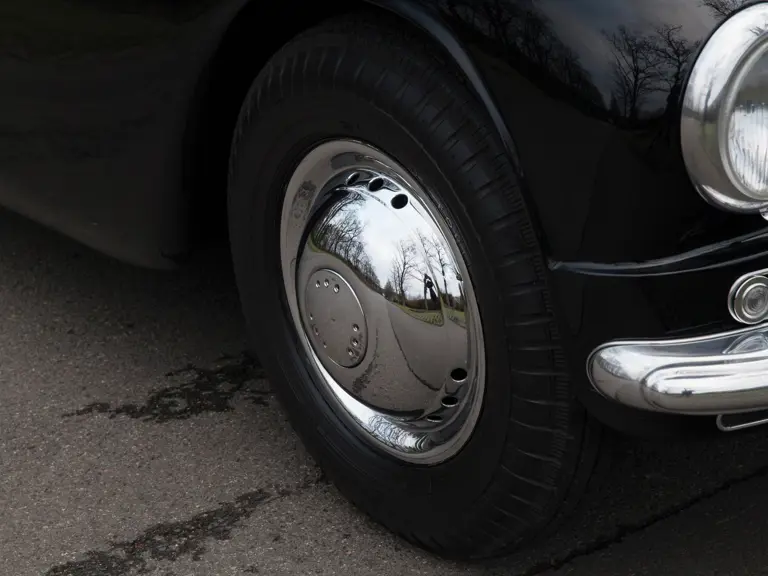
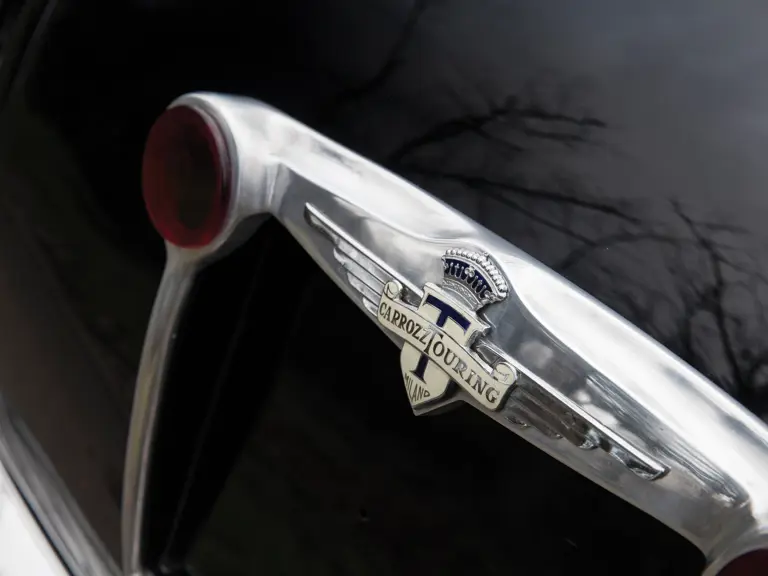
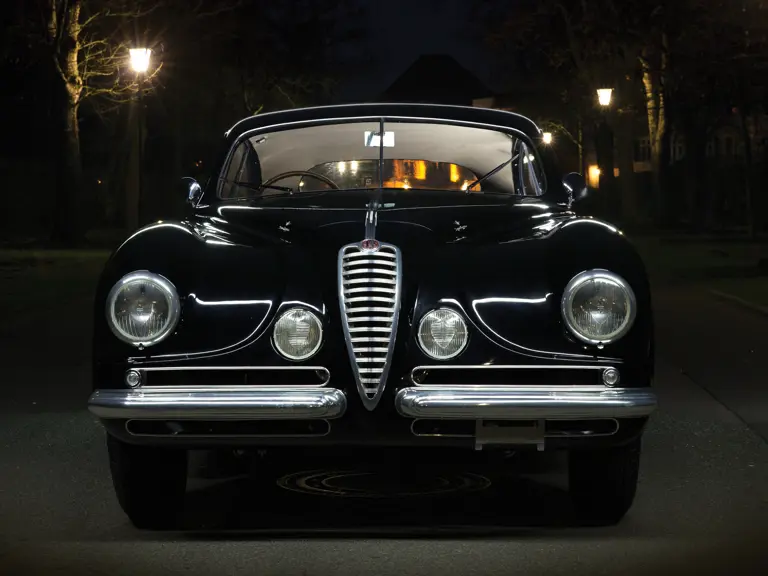
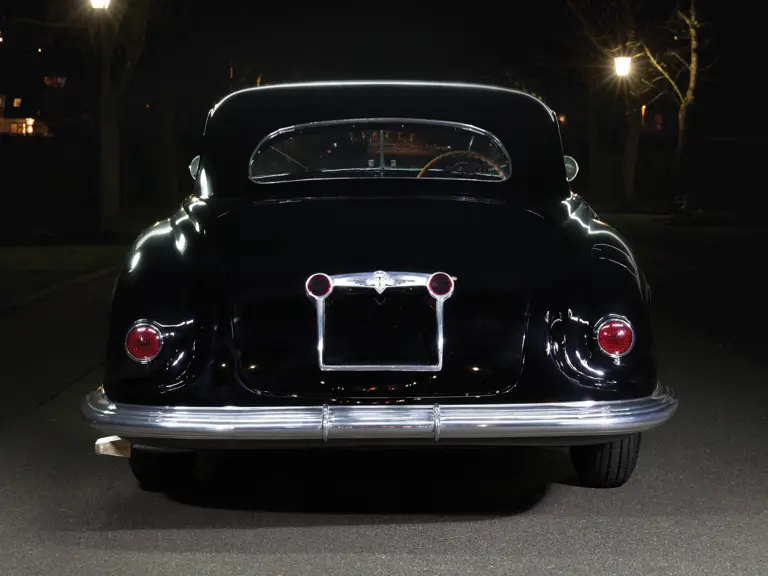
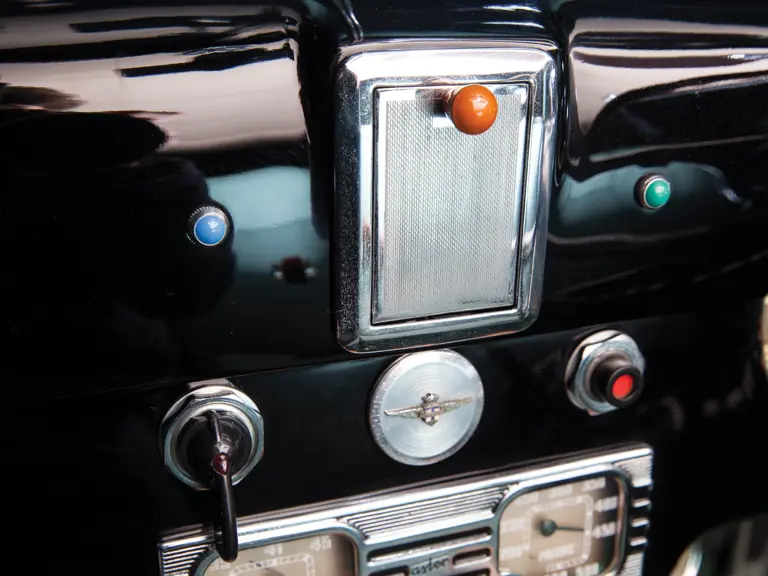
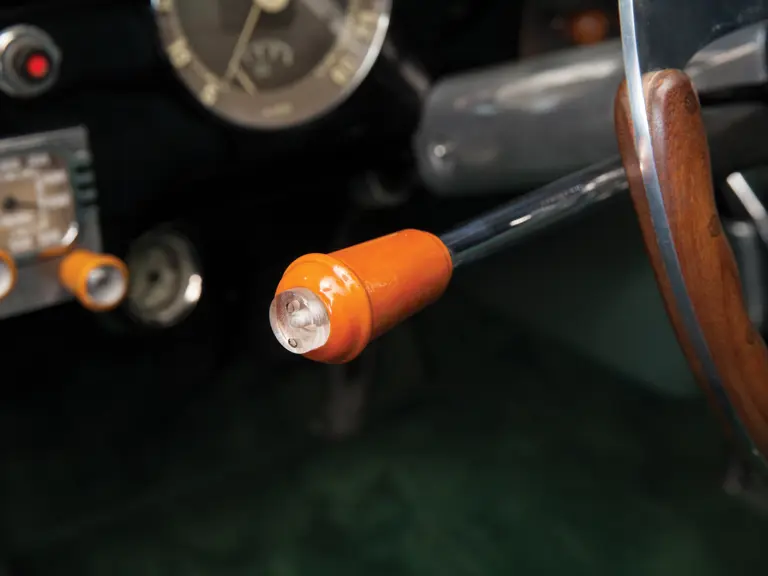

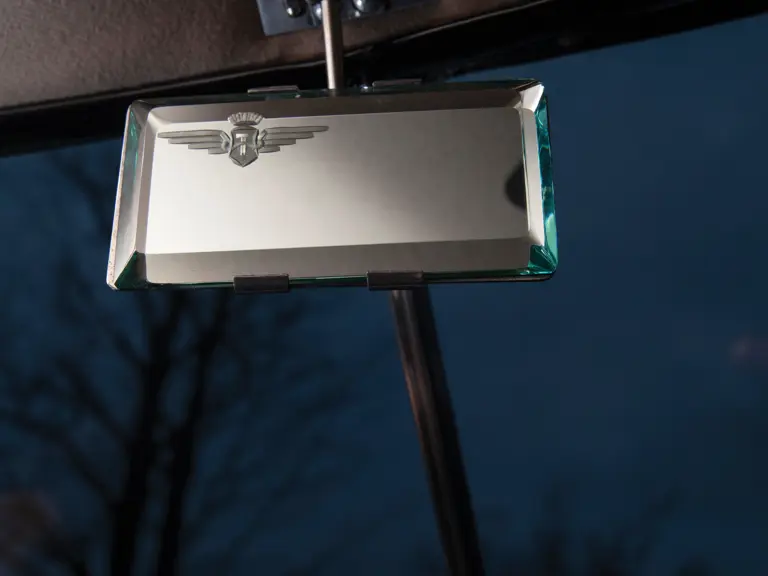
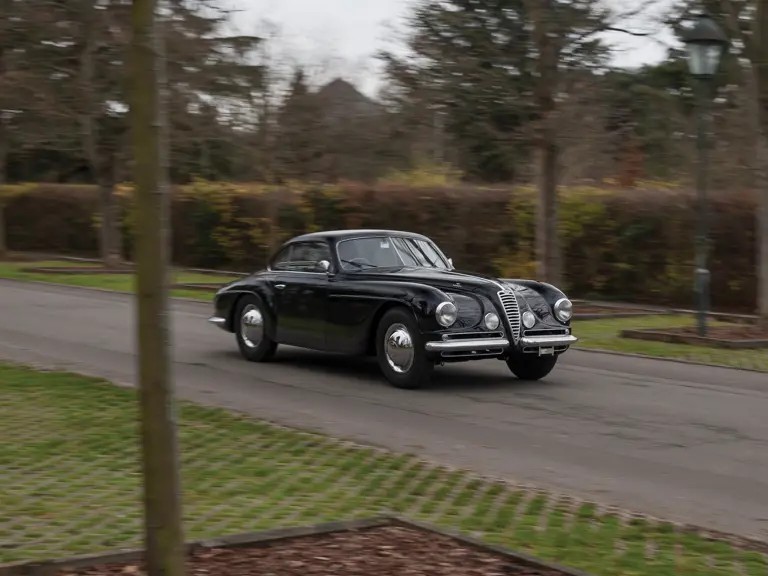
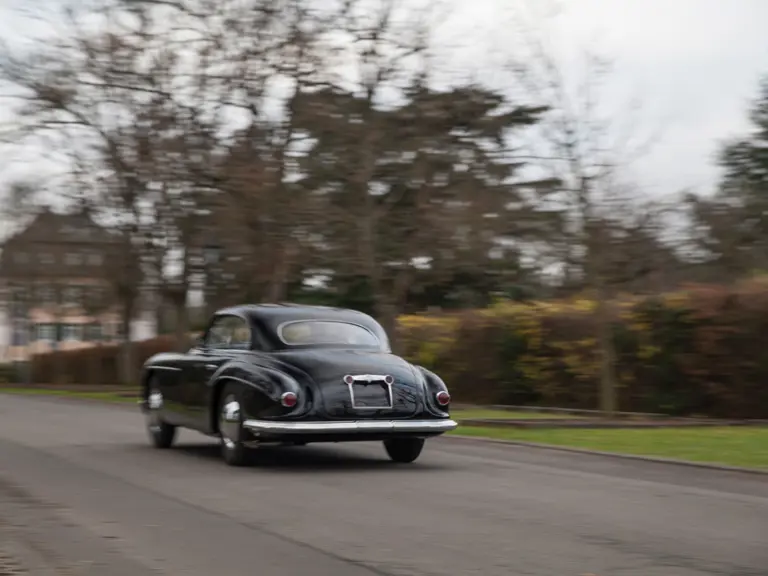
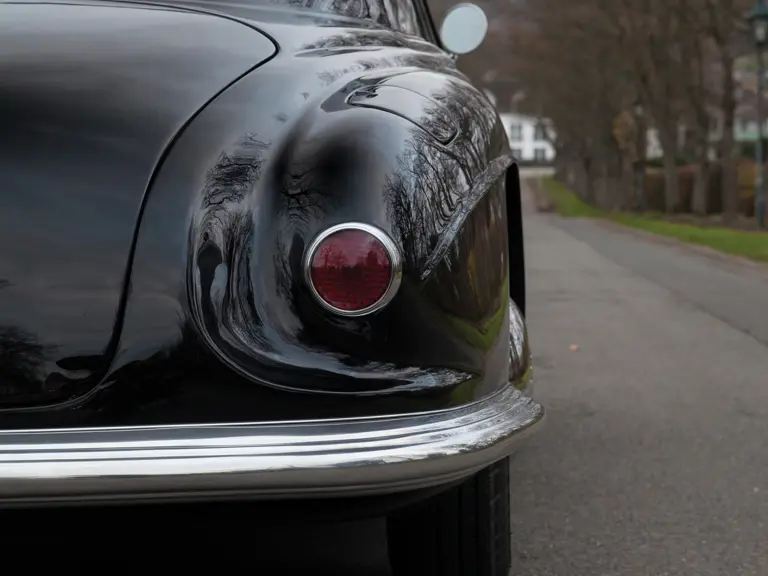
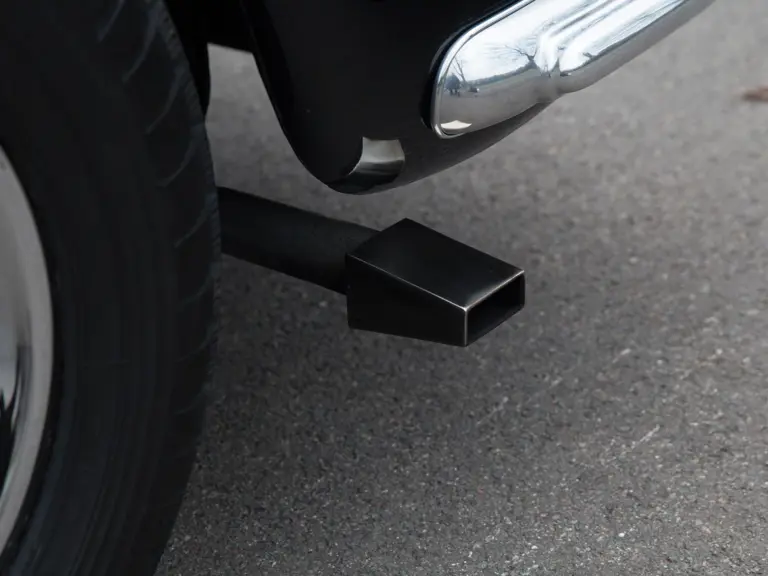
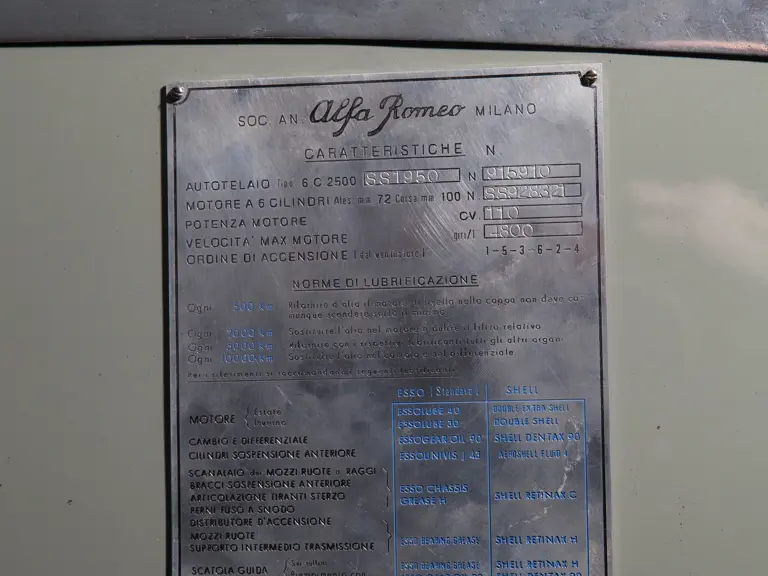
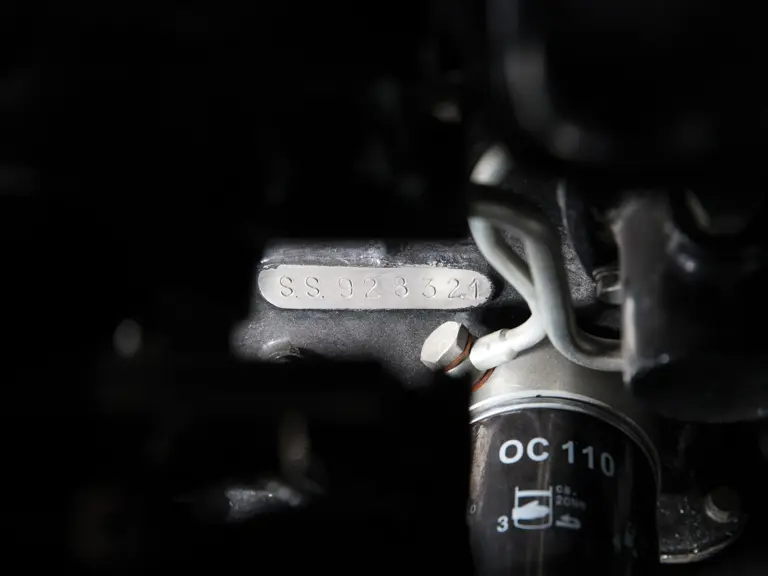
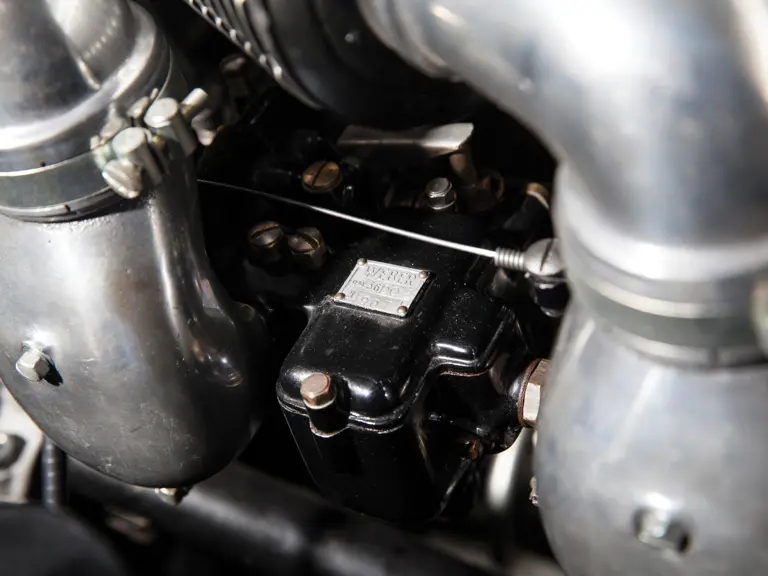
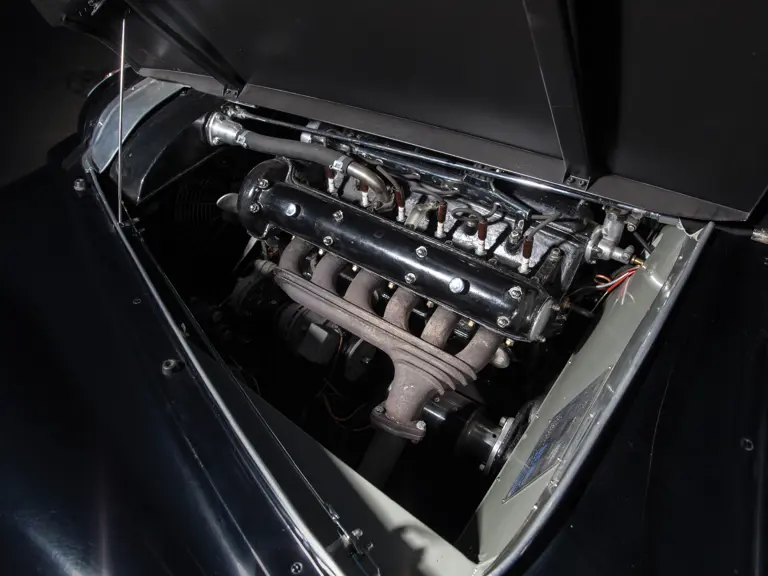
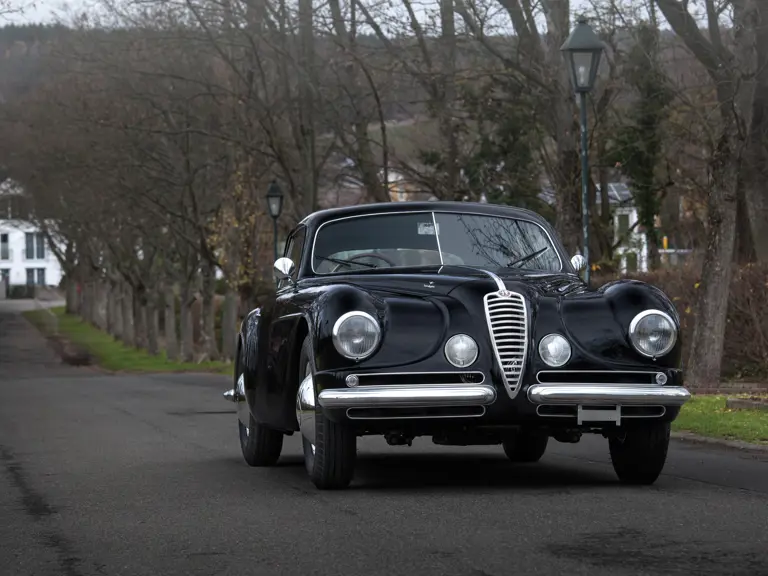
 | Paris, France
| Paris, France

